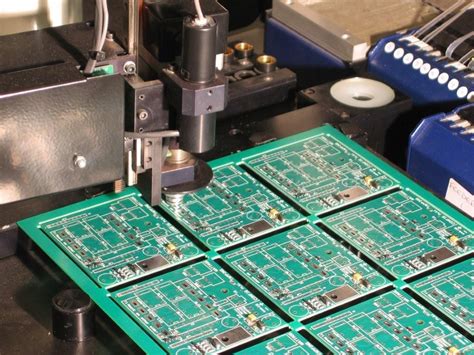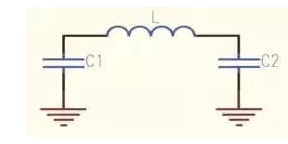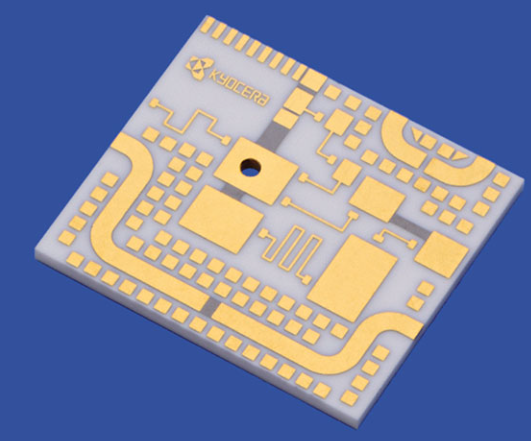High speed pcb material
Understanding the Importance of High-Speed PCB Material in Modern Electronics
In the rapidly evolving landscape of modern electronics, the demand for high-speed performance has become a critical factor in the design and functionality of electronic devices. At the heart of this technological advancement lies the printed circuit board (PCB), a fundamental component that serves as the backbone of electronic systems. As devices become more sophisticated and require faster data processing capabilities, the choice of PCB material becomes increasingly important. High-speed PCB materials are specifically engineered to meet the demands of high-frequency applications, ensuring signal integrity and minimizing losses.
To understand the significance of high-speed PCB materials, it is essential to consider the challenges posed by high-frequency signals.
As the frequency of electronic signals increases, so does the potential for signal degradation. This degradation can manifest as signal loss, distortion, or interference, all of which can severely impact the performance of an electronic device. High-speed PCB materials are designed to mitigate these issues by offering superior electrical properties, such as low dielectric constant and low dissipation factor. These properties help maintain signal integrity by reducing signal loss and minimizing the delay in signal propagation.
Moreover, the choice of PCB material also influences the thermal management of electronic devices.
High-speed applications often generate significant amounts of heat, which can affect the reliability and lifespan of a device. High-speed PCB materials typically exhibit excellent thermal conductivity, allowing for efficient heat dissipation. This is crucial in preventing overheating and ensuring the stable operation of electronic components. Additionally, these materials often possess enhanced mechanical properties, providing the necessary durability to withstand the stresses associated with high-speed operations.
Transitioning to the practical implications, the selection of high-speed PCB materials is not only a technical decision but also an economic one.
The cost of materials can vary significantly, and designers must balance performance requirements with budget constraints. However, investing in high-quality materials can lead to long-term benefits, such as reduced maintenance costs and improved product reliability. Furthermore, as the demand for high-speed applications continues to grow, the market for advanced PCB materials is expanding, offering a wider range of options for designers to choose from.
In addition to performance and cost considerations, environmental factors are also playing an increasingly important role in material selection.
The electronics industry is under pressure to adopt sustainable practices, and the choice of PCB materials is no exception. Manufacturers are now developing eco-friendly high-speed PCB materials that comply with environmental regulations and reduce the carbon footprint of electronic devices. These materials are designed to be recyclable and free from hazardous substances, aligning with the global push towards sustainability.
In conclusion, the importance of high-speed PCB materials in modern electronics cannot be overstated. As electronic devices continue to advance, the need for materials that can support high-frequency applications while maintaining signal integrity and thermal management becomes paramount. Designers must carefully consider the electrical, thermal, mechanical, and environmental properties of PCB materials to ensure optimal performance and reliability. By doing so, they can meet the demands of today’s high-speed applications and contribute to the development of innovative and sustainable electronic solutions.
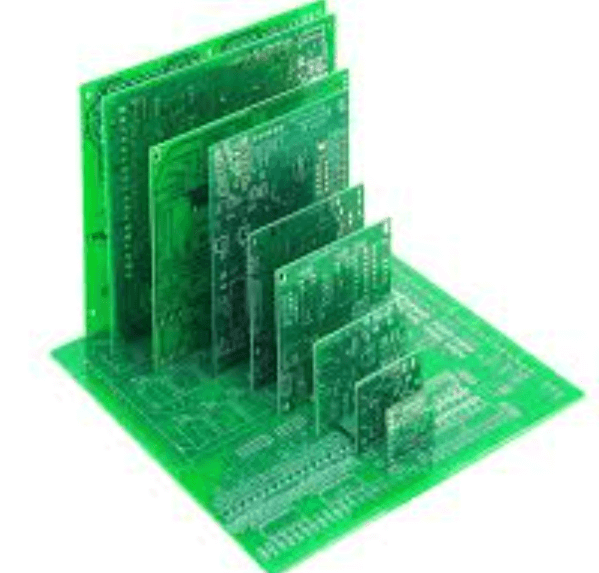
Key Characteristics to Consider When Choosing High-Speed PCB Material
When selecting high-speed PCB material, several key characteristics must be considered to ensure optimal performance and reliability in electronic applications. As technology advances, the demand for faster and more efficient electronic devices continues to grow, making the choice of PCB material increasingly critical.
One of the primary factors to consider is the dielectric constant (Dk) of the material.
The dielectric constant affects the signal integrity and speed of the PCB. Materials with a lower dielectric constant are generally preferred for high-speed applications because they allow signals to propagate faster, reducing signal loss and improving overall performance.
In addition to the dielectric constant, the dissipation factor (Df) is another crucial characteristic.
The dissipation factor measures the energy loss as heat within the material. A lower dissipation factor indicates that the material is more efficient at transmitting signals with minimal energy loss, which is essential for maintaining signal integrity in high-speed circuits. Therefore, selecting a PCB material with a low dissipation factor is vital for applications where signal fidelity is paramount.
Thermal management is another important consideration when choosing high-speed PCB materials.
As electronic devices operate at higher speeds, they tend to generate more heat, which can affect performance and reliability. Materials with good thermal conductivity can help dissipate heat more effectively, preventing overheating and ensuring the longevity of the device. Consequently, evaluating the thermal properties of PCB materials is essential for high-speed applications, particularly in environments where temperature fluctuations are common.
Moreover, the coefficient of thermal expansion (CTE) is a critical factor that influences the mechanical stability of the PCB.
The CTE measures how much a material expands or contracts with temperature changes. A mismatch in CTE between the PCB material and other components can lead to mechanical stress, potentially causing delamination or failure of the board. Therefore, selecting a material with a CTE that closely matches that of the components is crucial for maintaining the structural integrity of the PCB under varying thermal conditions.
Furthermore, the material’s ability to resist moisture absorption is an important consideration, especially in environments with high humidity.
Moisture absorption can lead to changes in the dielectric properties of the material, affecting signal integrity and potentially causing short circuits. High-speed PCB materials with low moisture absorption rates are preferred to ensure consistent performance and reliability in humid conditions.
Additionally, the manufacturability of the PCB material should not be overlooked.
Some high-speed materials may require specialized processing techniques, which can increase production costs and complexity. It is important to balance the performance benefits of advanced materials with the practical considerations of manufacturing and cost-effectiveness. Collaborating with experienced PCB manufacturers can help in selecting materials that meet both performance and production requirements.
In conclusion, choosing the right high-speed PCB material involves a careful evaluation of several key characteristics, including dielectric constant, dissipation factor, thermal management, coefficient of thermal expansion, moisture resistance, and manufacturability. By considering these factors, designers can ensure that their PCBs meet the demands of high-speed applications, providing reliable and efficient performance in a wide range of electronic devices. As technology continues to evolve, the importance of selecting the appropriate PCB material will only grow, underscoring the need for informed decision-making in the design and manufacturing process.
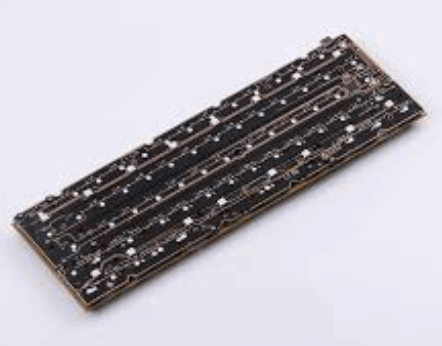
Comparing Different Types of High-Speed PCB Materials for Optimal Performance
In the realm of modern electronics, the demand for high-speed printed circuit boards (PCBs) has surged, driven by the need for faster data transmission and enhanced performance in various applications. Selecting the appropriate high-speed PCB material is crucial for optimizing performance, as it directly influences signal integrity, thermal management, and overall reliability. As technology continues to advance, understanding the characteristics and benefits of different high-speed PCB materials becomes imperative for engineers and designers.
To begin with, one of the most commonly used materials in high-speed PCBs is FR-4, a glass-reinforced epoxy laminate.
While FR-4 is widely recognized for its cost-effectiveness and versatility, it may not always be the best choice for high-speed applications due to its relatively high dielectric constant and loss tangent. These properties can lead to signal degradation at higher frequencies, making it less suitable for applications requiring superior signal integrity. However, for less demanding high-speed applications, enhanced versions of FR-4 with improved electrical properties can be considered.
In contrast, materials such as Rogers RO4000 series and RO3000 series offer lower dielectric constants and loss tangents, making them more suitable for high-frequency applications.
These materials are often preferred in RF and microwave circuits due to their ability to maintain signal integrity over a wide range of frequencies. The Rogers materials also exhibit excellent thermal stability, which is crucial for maintaining performance in environments with fluctuating temperatures. Consequently, they are often chosen for applications in telecommunications, aerospace, and defense industries where reliability and performance are paramount.
Another noteworthy material is the PTFE (Polytetrafluoroethylene) laminate, commonly known by the brand name Teflon.
PTFE-based materials are renowned for their extremely low dielectric constants and loss tangents, making them ideal for ultra-high-speed applications. Their exceptional electrical properties ensure minimal signal loss, even at very high frequencies. However, PTFE materials can be more challenging to work with due to their mechanical properties, requiring specialized processing techniques. Despite these challenges, their unparalleled performance makes them a preferred choice for high-frequency applications such as satellite communications and radar systems.
Moreover, ceramic-filled laminates are gaining popularity in high-speed PCB applications.
These materials combine the benefits of ceramics and traditional laminates, offering low dielectric constants and excellent thermal conductivity. The enhanced thermal management capabilities of ceramic-filled laminates make them suitable for applications where heat dissipation is a critical concern. Additionally, their mechanical stability ensures reliable performance in demanding environments, making them a viable option for automotive and industrial applications.
As we compare these different high-speed PCB materials, it becomes evident that the choice largely depends on the specific requirements of the application.
Factors such as frequency range, thermal management needs, mechanical stability, and cost considerations play a significant role in determining the most suitable material. Engineers must carefully evaluate these factors to ensure optimal performance and reliability in their designs.
In conclusion, the selection of high-speed PCB materials is a critical decision that can significantly impact the performance and reliability of electronic devices. By understanding the unique properties and advantages of materials like FR-4, Rogers laminates, PTFE, and ceramic-filled laminates, engineers can make informed choices that align with their specific application needs. As technology continues to evolve, staying abreast of advancements in PCB materials will be essential for achieving optimal performance in high-speed electronic systems.
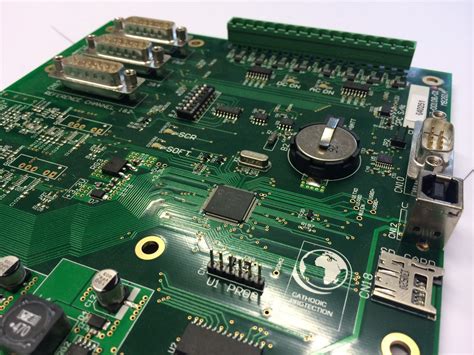
Innovations and Trends in High-Speed PCB Material Technology
In the rapidly evolving landscape of electronics, the demand for high-speed printed circuit boards (PCBs) has surged, driven by the need for faster data transmission and enhanced performance in modern devices. As technology advances, the materials used in high-speed PCBs have become a focal point for innovation, with researchers and manufacturers striving to develop solutions that meet the rigorous demands of contemporary applications.
This pursuit of excellence in PCB material technology is characterized by several key trends and innovations that are shaping the future of electronic design.
One of the most significant trends in high-speed PCB material technology is the development of low-loss dielectric materials. These materials are crucial for minimizing signal loss and maintaining signal integrity at high frequencies. Traditional materials, such as FR-4, are often inadequate for high-speed applications due to their higher dielectric losses.
Consequently, manufacturers are turning to advanced materials like polytetrafluoroethylene (PTFE) and liquid crystal polymer (LCP), which offer superior electrical properties.
These materials not only reduce signal attenuation but also enhance the overall performance of high-speed circuits, making them indispensable in applications such as 5G telecommunications and high-frequency radar systems.
In addition to low-loss materials, the trend towards miniaturization and increased circuit density has spurred the development of thinner and more flexible PCB substrates.
As devices become smaller and more complex, the need for compact and lightweight PCBs has intensified. Innovations in material science have led to the creation of ultra-thin laminates and flexible substrates that can accommodate intricate circuit designs without compromising performance. These advancements enable designers to pack more functionality into smaller spaces, facilitating the development of cutting-edge technologies such as wearable electronics and Internet of Things (IoT) devices.
Moreover, the push for sustainability and environmental responsibility is influencing the choice of materials in high-speed PCB manufacturing.
As industries worldwide strive to reduce their carbon footprint, there is a growing emphasis on using eco-friendly materials and processes. This has led to the exploration of biodegradable substrates and the reduction of hazardous substances in PCB production. By adopting greener materials, manufacturers not only comply with environmental regulations but also appeal to environmentally conscious consumers, thereby gaining a competitive edge in the market.
Another noteworthy innovation in high-speed PCB material technology is the integration of advanced thermal management solutions.
As electronic devices operate at higher speeds, they generate more heat, which can adversely affect performance and reliability. To address this challenge, researchers are developing materials with enhanced thermal conductivity, such as metal-core PCBs and ceramic-filled laminates. These materials efficiently dissipate heat, ensuring that high-speed circuits remain stable and reliable even under demanding conditions. This is particularly important in applications like data centers and automotive electronics, where thermal management is critical to maintaining optimal performance.
In conclusion, the field of high-speed PCB material technology is witnessing a wave of innovations and trends that are reshaping the electronics industry.
From low-loss dielectric materials and miniaturization to sustainability and thermal management, these advancements are driving the development of faster, more efficient, and environmentally friendly electronic devices. As technology continues to advance, the demand for high-speed PCBs will only grow, prompting further research and innovation in this dynamic field. By staying at the forefront of these trends, manufacturers and designers can ensure that they are well-equipped to meet the challenges and opportunities of the future.



